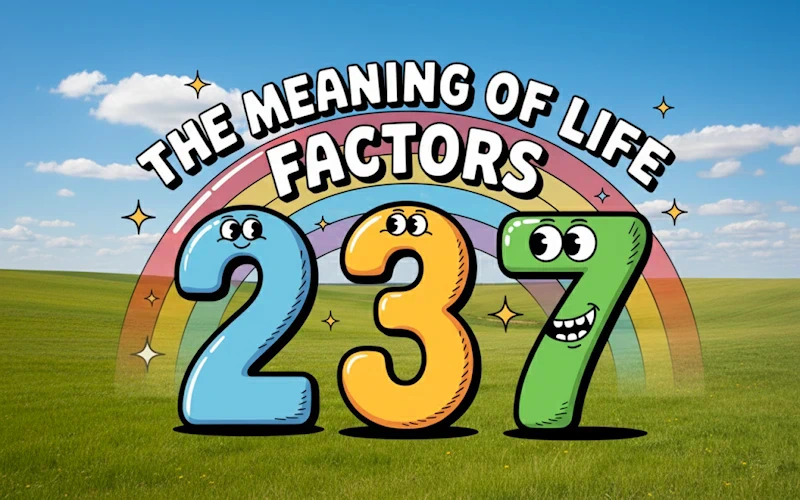

Number Grids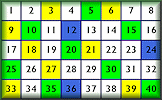
Investigate the properties of number with these interactive number grids.
Prime Numbers Jigsaw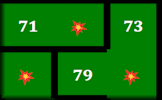
Interactive jigsaw puzzles of different types of grids containing prime numbers.
Factor Trees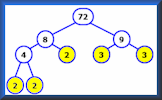
Create factor trees to find the prime factors of the given numbers.
Factor Pairs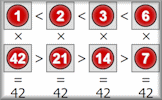
Find the factor pairs of the given numbers and arrange them in order.
Flabbergasted Game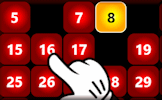
This game for one or two players is an exciting challenge to demonstrate an understanding of factors and multiples.
How Many Factors?
Work out the number of factors a number has then write them all as a list.
Product of Primes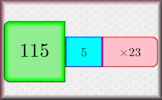
Match the primes that multiply to give the products. A drag and drop activity.
Prime Labyrinth
Find the path to the centre of the labyrinth by moving along the prime numbers.
Connect 4 Factors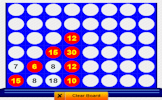
This a game for one or two players. The winner is the first to line up four numbers with a common factor.
Pick The Primes
Pick the prime fruit from the tree as quickly as possible. Practise to improve your personal best time.
HCF and LCM
Practise finding the highest common factor (H.C.F), sometimes called the greatest common divisor, and the lowest common multiple (L.C.M) of two numbers.
Factor Trees Challenge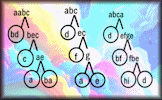
Can you determine the unique digits that will complete these factor trees?
Times Square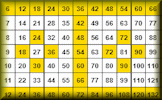
Practise your times tables with this self-checking multiplication grid.
Divisibility Test
Practise using the quick ways to spot whether a number is divisible by the digits two to nine.
Algebraic HCF
Exercises providing practice finding the highest common factor of algebraic expressions.
Algebraic LCM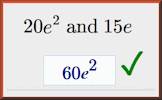
Exercises providing practice finding the lowest common multiple of algebraic expressions.
Factorising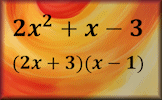
Practise the skills of algebraic factorisation in this structured online self-marking exercise.
Scallywags and Scoundrels
Arrange the scallywags and scoundrels on the chairs so that the numbers of any two sitting next to each other add up to a prime number.
Prison Cell Problem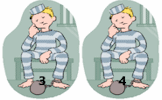
A number patterns investigation involving prisoners and prison guards.
Product Square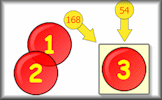
Arrange the given numbers in a three by three grid to obtain the diagonal, row and column products.
Satisfy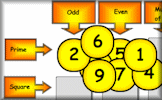
Place the nine numbers in the table so they obey the row and column headings about the properties of the numbers.
Threes and Fives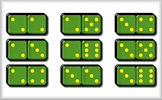
A game for two players who take turns to add a domino to the line in order to score threes and fives.
Three Ways
Find three different ways of multiplying four different digits together to get the given target number. There are nine levels for this online challenge.
Doughnut Dissection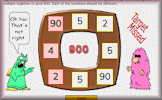
A puzzle to find four different ways of making 900 by multiplying together three different numbers.
Delightfully Divisible
Arrange the digits one to nine to make a number which is divisible in the way described.
Sieve of Eratosthenes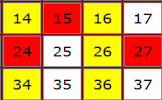
A self checking, interactive version of the Sieve of Eratosthenes method of finding prime numbers.
Square and Cube Roots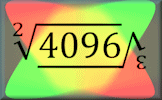
Find square roots and cube roots by first calculating the prime factorisation of a number.
Aunt Sophie's Post Office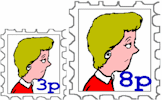
Investigate the ways of making up various postage amounts using 3p and 8p stamps. An online stamp calculator is provided for you to check your working.
This is the main Transum help video on Factors.
Prime Numbers Video
A reminder of what prime numbers and composite numbers are.
Finding Prime Factors
A straight forward explanation from SLEP
HCF and LCM Video
Learn different methods for finding the highest common factor and lowest common multiple of two or three numbers.
Number Grids
Investigate the properties of number with these interactive number grids.
HCF and LCM Calculator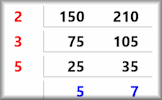
A demonstration of how to find the highest common factor (HCF or GCD) and the lowest common multiple (LCM) of two numbers.
Divisibility Tests 2-12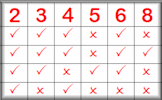
A visual aid designed to be projected in the classroom. Here you can find the quick ways of telling whether a number is exactly divisible by the numbers two to twelve.
Prison Cell Problem
A number patterns investigation involving prisoners and prison guards.
Sieve of Eratosthenes
A self checking, interactive version of the Sieve of Eratosthenes method of finding prime numbers.

Abundant Buses
A game based around the concept of factors and abundant numbers.

Dancing
Work out how many people were at the dance from the clues given.

Factuples
Spot the factors and the multiples amongst the numbers in the grid.
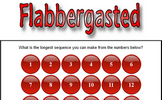
Flabbergasted
If each number in a sequence must be a factor or multiple of the previous number what is the longest sequence that can be made from the given numbers?
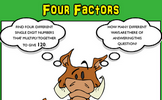
Four Factors
Find four single digit numbers that multiply together to give 120. How many different ways are there of answering this question?

Hotel Digital
A puzzle about the lifts in a hotel which serve floors based on the day of the week.
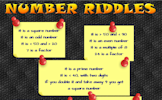
Number Riddles
Can you work out the numbers from the given clues.
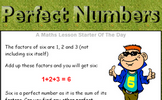
Perfect Numbers
Six is a perfect number as it is the sum of its factors. Can you find any other perfect numbers?
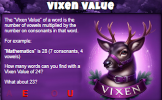
Vixen Value
The Vixen Value of a word is the number of vowels multiplied by the number of consonants. How many words can you find with Vixen Value of 24?
40 items are currently in this category.
Teachers might find the complete Factors Topic List useful.
A factor is a whole number that divides exactly into another whole number. We say the first number is a factor of the second number. Prime numbers only have two factors, one and themselves.
After becoming familiar with times tables pupils then practise using this knowledge by recognising factors of numbers. There are well known and some less well known divisibility tests that are of some use in solving more complex number problems.
Pupils need to know how to find the highest common factor (HCF) of two or more numbers either mentally or using a pen and paper strategy so that they can correctly manipulate fractions and algebraic expressions.
